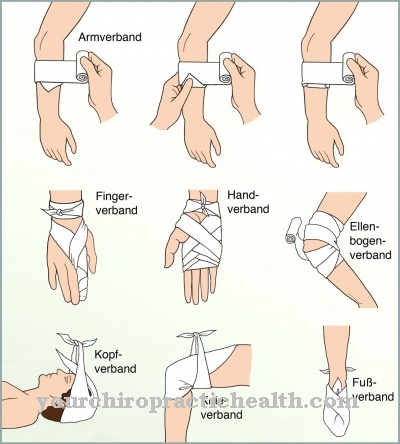The Bariatric Surgery is a branch of visceral surgery and includes all recognized measures to combat pathological obesity, including gastric band, sleeve stomach, gastric bypass and biliopancreatic diversion with duodenal switch.
In addition to a body mass index of over 40, the prerequisite for bariatric surgery is, above all, the unsuccessful exhaustion of conservative methods of weight loss, but accompanying diseases and age parameters must also be taken into account. The patients are advised in specially certified institutions, whereby competent care is required even after the operation, as the patient has to change his diet, for example, in order to be able to benefit permanently from the surgical modification of his gastrointestinal tract.
What is Bariatric Surgery?

Under the term of bariatric surgery or also bariatric surgery all surgical interventions to combat obesity are summarized. As a specialty of visceral surgery, bariatric surgery is particularly concerned with the gastrointestinal tract. In the course of an obesity surgery, the operative changes in the gastrointestinal tract counteract excess weight.
This makes bariatric surgery the most invasive method for weight loss and at the same time helps to minimize the risk of secondary diseases. The four recognized standard procedures of this surgical technique are gastric banding, biliopancreatic diversion with duodenal switch, gastric bypass and gastric sleeve. While gastric band, gastric bypass and gastric sleeve limit the maximum food intake by themselves, biliopancreatic diversion with duodenal switch limits the maximum intake of certain ingredients of the food.
Function, effect & goals
The goal of any bariatric surgery is to restrict food intake or nutrient intake, which makes it easier for the patient to lose weight and thus helps to avoid secondary diseases. The gastric band is one of the best known and most popular methods of bariatric surgery because it can be completely removed after a certain period of time.
The stomach diameter is narrowed in the entrance area by the doctor applying a silicone band to the gastric fundus in the course of a laparoscopic operation and creating an access in front of the breastbone or in the abdominal wall. With gastric bypass, on the other hand, a miniaturized stomach is used, which the doctor connects to a loop in the small intestine. Another section of the small intestine now collects the digestive juices. In the case of biliopancreatic diversion with a duodenal switch, a gatekeeper mechanism in the stomach prevents the sugar from being emptied and thus from increasing blood sugar.
During this procedure, the duodenal stump is sealed off, and the doctor connects the duodenum to the ileum. The fourth and last method of bariatric surgery recognized as a standard procedure is the sleeve stomach. Ultimately, this procedure is one of the gastroplastics and has become known as the first step in the so-called two-step method. The doctor resects the stomach along the curvature, which leaves a tube-like gastric remnant that has a much smaller volume than the actual stomach. The doctor takes out the separated part of the stomach completely.
The sutures are usually done laparoscopically. After this surgical change of the stomach to a sleeve stomach, the first weight reduction occurs, whereby the patient is supported two years after the operation by a biliopancreatic diversion according to Scopinaro in approaching the final target weight. The actual route of the food passage is not changed with this method, whereby endoscopic procedures in the sleeve stomach are also possible.
Since gastric bands are removed after a certain period of time in order to keep the risk of infection and the risk of slipping low, obesity surgeons often combine gastric banding with gastric sleeve in the long term. This means that during an operation to remove a gastric band, a gastric sleeve is often created at the same time. Which obesity surgical procedure is used in each individual case depends on the personal goals and wishes of the patient as well as the type of obesity.
Risks, side effects & dangers
Obesity surgery is always preceded by professional advice from an approved institution. There are now certified reference, competence and excellence centers in Germany for this purpose.
A body mass index over 40 or a BMI over 35 combined with concomitant diseases such as diabetes mellitus or arterial hypertension is one of the requirements for bariatric surgery. The pathological form of obesity must also have existed for at least three years and the patient should be between 18 and 65 years of age. Conservative methods such as a multimodal therapy program with nutritional advice and exercise training must have been fully exhausted in advance.
In addition, the patient must not bring along any profound psychoses or addiction problems. The actual risks of the procedure are strongly related to the chosen method and your own constitution. Since being overweight generally negatively affects the risk of anesthesia and surgery, nowadays interventions are performed, as far as possible, laparoscopically or using the NOTES or SILS technique. Current bariatric surgery is therefore associated with significantly fewer complications than it was a few years ago.
The procedures of this surgical direction change not only the weight but also the general state of health of the patient for the better, since pathological obesity is always associated with negative effects for the general state of health. However, every bariatric surgery requires a consistent change in diet afterwards. Obesity surgery has not yet been included in the standard catalog of health insurance companies. Nevertheless, the health insurance companies will assume the costs incurred in individual cases if the patient applies for the costs to be covered with good justification.

























.jpg)

.jpg)
